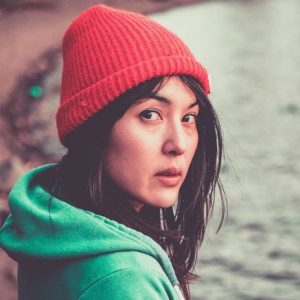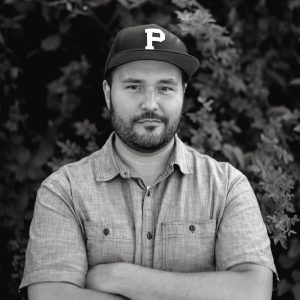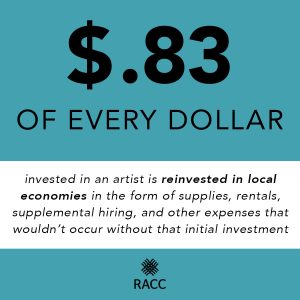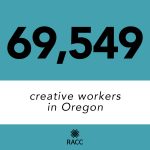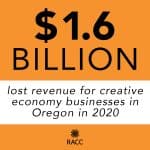THE ARTS MEAN BUSINESS IN THE GREATER PORTLAND AREA
The Arts & Economic Prosperity (AEP6) survey is back.
AEP6 documents the economic contributions of the arts in over 250 diverse communities and regions across the country, representing all 50 states and the District of Columbia. During 2015, AEP5 in Oregon the nonprofit arts and culture industry generated $687 million of economic activity—$364 million in spending by arts and cultural organizations and an additional $323 million in event-related expenditures by their audiences. This activity supported 22,299 full time equivalent jobs and generated $53 million in revenue to local and state governments.
The study put to rest a misconception that communities supported arts and culture at the expense of local economic development. In fact, what AEP5 showed was that communities were investing in an industry that supports jobs, generates government revenue, and is the cornerstone of tourism. This economic impact study sent a strong signal that when we support the arts, we not only enhance our quality of life, but we also invest in the Greater Portland Area’s economic well-being, including Clackamas and Washington Counties.
This year, we have a chance to study the impact of the past few years along with the resilience of our creative community. Nonprofit arts and culture organizations are active contributors to our business community. They are employers, producers, and consumers. They are members of the Chamber of Commerce as well as key partners in the marketing and promotion of their cities, regions, and states. Spending by nonprofit arts and cultural organizations totaled $364 million during fiscal year 2015.
To measure the impact of spending by cultural audiences in the Greater Portland Area, data were collected from 1,474 event attendees during AEP5. Researchers used an audience-intercept methodology, a standard technique in which patrons are asked to complete a short survey about their event-related spending (while they are attending the event). Event-related spending by these attendees totaled $116 million in the Greater Portland Area during fiscal year 2015, excluding the cost of event admission.
Arts & Economic Prosperity 5 showed conclusively that, locally as well as nationally, the arts mean business!
Read more about RACC’s lead in the City of Portland and Multnomah County here.
Audience surveys will be collected from attendees at performances, events, exhibits, venues, and facilities during the 12 months from May 2022 through April 2023. Venue Eligibility
If you are interested in getting involved as either a venue to be counted please submit your live event for consideration here (for the tri-county area) and/or are interested in volunteering in Multnomah County, please contact Mario Mesquita, Manager of Advocacy & Engagement at Regional Arts & Culture Council at AEP6@racc.org
Raziah Roushan, Executive Director of Tualatin Valley Creates, director@tvcreates.org, for Washington County
Dianne Alves, Executive Director of Clackamas County Art Alliance, dianne@clackamasartsalliance.org, for Clackamas County
Read more at Americans for the Arts.
Arts & Economic Prosperity 5 Regional Findings:
Oregon Study Regions Comparison
Arts & Economic Prosperity 5 Oregon Summary
Arts & Economic Prosperity 5 Greater Portland Area Summary
Arts & Economic Prosperity 5 Clackamas County Summary
Arts & Economic Prosperity 5 Washington County Summary

